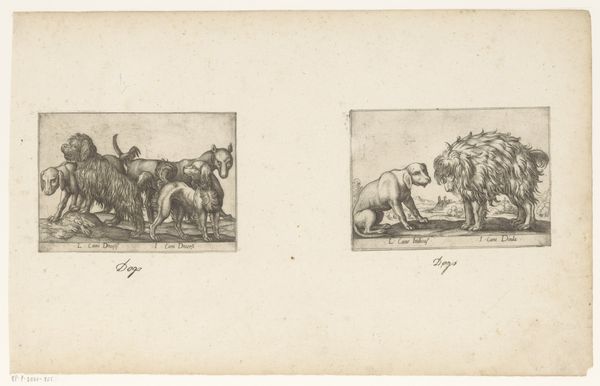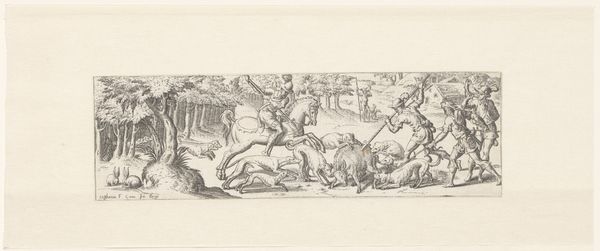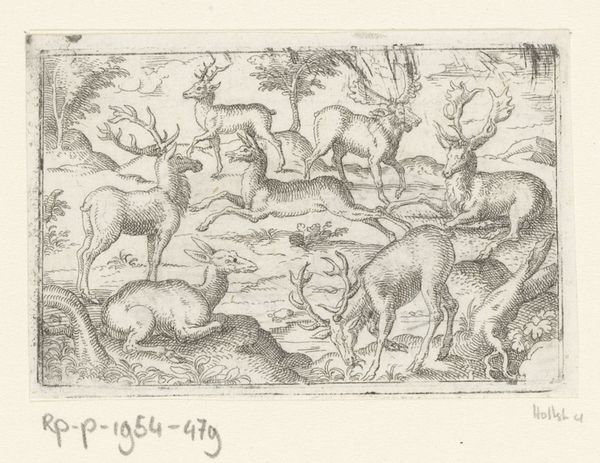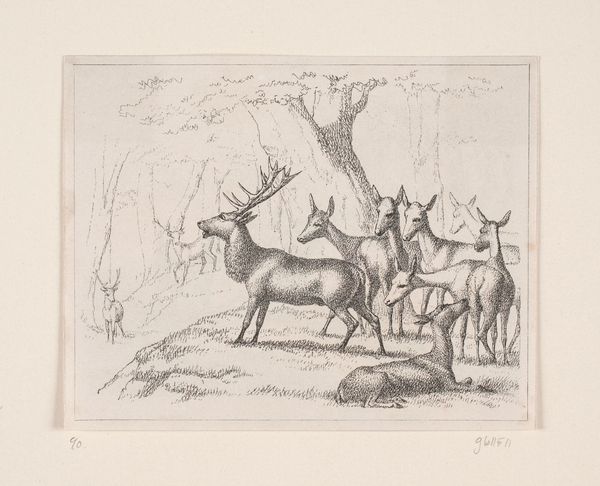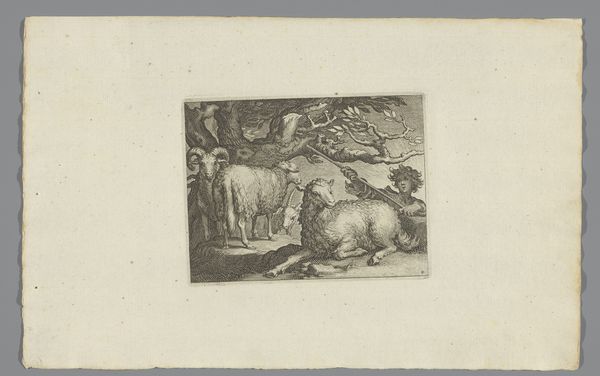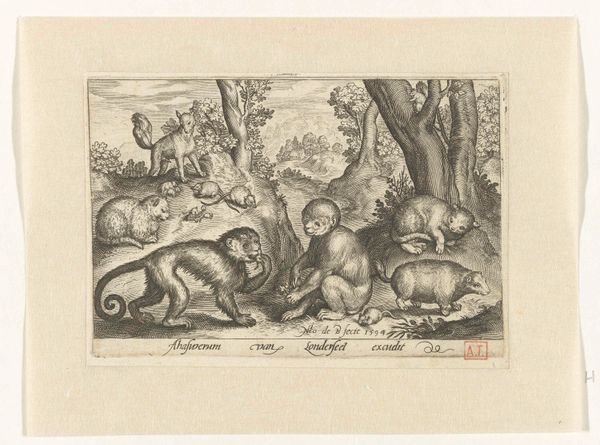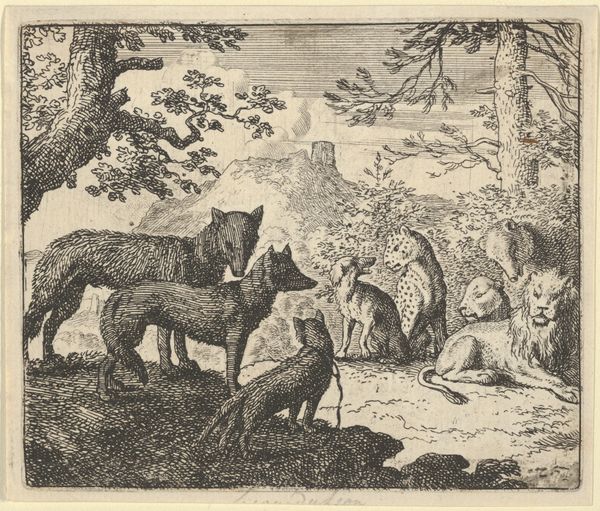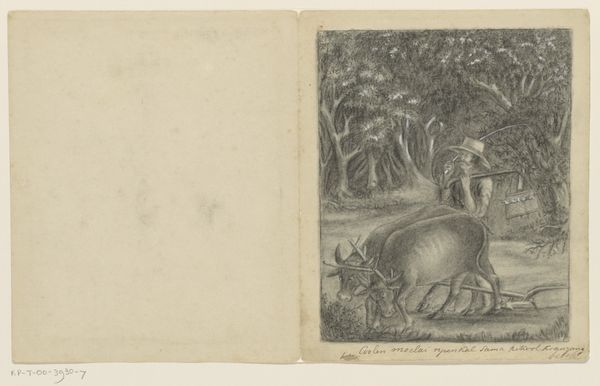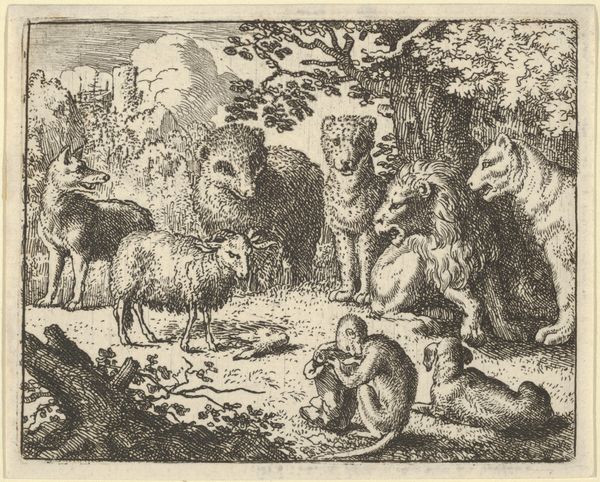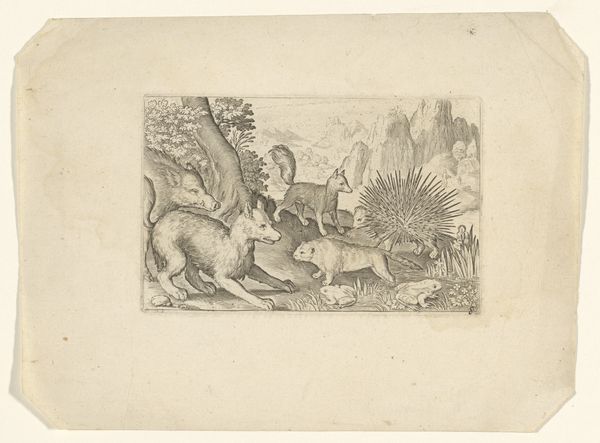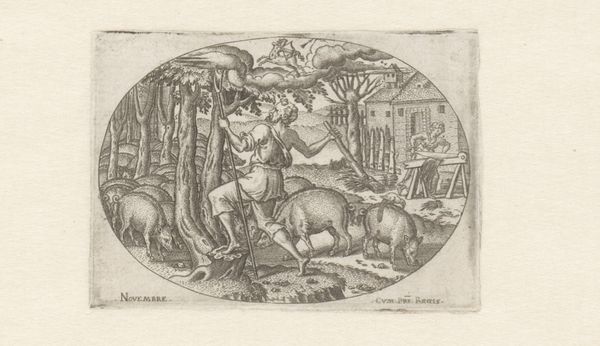
drawing, print, engraving
#
drawing
#
animal
#
ink paper printed
# print
#
landscape
#
forest
#
sketchbook drawing
#
history-painting
#
northern-renaissance
#
engraving
Dimensions: Sheet: 6 5/8 × 11 5/8 in. (16.8 × 29.5 cm)
Copyright: Public Domain
Editor: This is “Stags in the Forest,” a print from 1545 by Augustin Hirschvogel, rendered in ink on paper. It feels both familiar and… unsettling? All these animals, but they seem strangely still, posed. What do you make of it? Curator: "Unsettling" is spot on! It’s as if Hirschvogel isn’t just depicting a forest scene, but staging it. Notice how the stags aren't interacting; each is isolated within the group. I get the sense of figures in a tapestry… Do you think this reflects a kind of 16th-century "Cabinet of curiosities," where the natural world is arranged for display and consumption? Editor: Oh, that's interesting! A collection rather than a representation. What about the presence of the monkeys in the foreground? Curator: Ah, the monkeys! Unexpected, right? Are they exotic creatures brought to a European court? Symbols of human folly inserted into this curated natural world? Hirschvogel gives us no easy answers – just potent juxtapositions. And doesn’t that contrast of "noble" stags and "mischievous" monkeys tickle your fancy, suggesting a hidden satire? Editor: I hadn't thought of satire, but I can definitely see it. This has made me rethink the idea of "landscape." It's not just about pretty scenery, is it? Curator: Not at all! It's a stage for ideas, a mirror reflecting anxieties, and a playground for the artist's imagination. Hirschvogel’s forest whispers secrets that take time to hear and perhaps it makes you think about art being more than what meets the eye! Editor: Definitely. I'll never look at a forest scene the same way again! Curator: Excellent! That's the magic of digging beneath the surface!
Comments
No comments
Be the first to comment and join the conversation on the ultimate creative platform.
